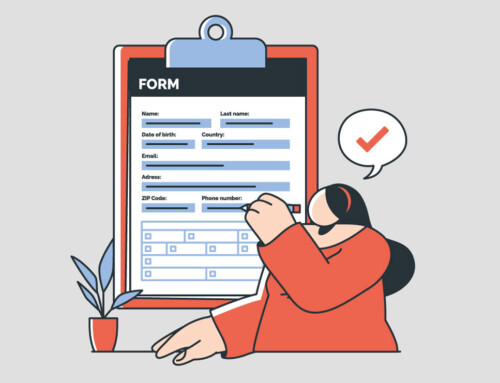Contents
An Ultimate Guide to Indemnity Clauses
Many people, including lawyers, may deal with a contract in which they face numerous challenges and risks. Here, the indemnity clause comes to the scene. To know what an indemnity clause is, you should know what it does. Contracting parties usually consider an indemnity clause to mitigate the risks of a contract and make its scope and limitations clear. In this blog, we will discover the aspects of the indemnity clause.
What Is an Indemnity Clause?
An indemnity clause is a legal provision where one party agrees to compensate another for specific losses or damages. It acts as a protective measure, ensuring that the financial burden falls on the party best positioned to manage or prevent the risk. This clause is often found in commercial contracts, aiming to reduce uncertainty for both parties.
To understand what an indemnity clause is, it is essential to know its purpose: to allocate risk effectively. It allows parties to define responsibility for potential damages, protecting against unforeseen liabilities. The clause is especially common in agreements involving high-risk activities, such as construction or real estate.
Key Elements of an Indemnity Clause
I. Indemnifying and Indemnified Parties
An indemnity clause specifies the roles of the indemnifying party and the indemnified party. The indemnifying party takes responsibility for covering certain losses, while the indemnified party is the one protected. This clear allocation of roles helps manage risk and defines who is liable for specific events or damages.
II. Scope and Coverage of Indemnity Clauses
Understanding what an indemnity clause is involves recognizing its coverage. The scope defines what types of losses are included, such as legal fees, third-party claims, or direct financial damages. The broader the coverage, the more extensive the protection provided.
III. Relationship with the Indemnification Clause
The indemnification clause complements the indemnity clause by detailing the procedure for compensating the indemnified party. It sets out timelines, documentation requirements, and processes for claiming damages.

Types of Indemnity Clauses
I. Broad Form Indemnity
The broad form indemnity clause provides the highest level of protection. In this clause, the indemnifying party assumes full responsibility for all losses or damages, regardless of whether they were caused by the indemnifying party’s own actions or negligence. This type of clause is often used in high-risk industries like construction and manufacturing, where parties need extensive risk coverage. However, courts in some jurisdictions may limit the enforceability of broad-form indemnity clauses due to concerns about fairness and potential overreach.
II. Intermediate Form Indemnity
The intermediate form indemnity clause provides a balanced approach to risk allocation. Here, the indemnifying party agrees to cover losses that arise partly due to their actions or negligence, but not when the indemnified party is solely at fault. This clause is typically favored when both parties share some degree of control over potential risks. It is commonly seen in service agreements where each party contributes to the overall performance of the contract. Understanding the indemnity clause and its variations can help tailor contracts to meet specific needs and minimize disputes.
III. Limited Form Indemnity
The limited form indemnity clause offers the narrowest scope of protection. It requires the indemnifying party to cover losses only when they are directly responsible. This clause minimizes the risk for the indemnifying party, making it suitable for agreements where the parties want to strictly limit their liabilities. Limited form indemnity is often chosen in less complex contracts or when there is a high degree of mutual trust between the parties.
IV. Jurisdictional Variations in Indemnity Clauses
It is important to note that the enforceability of different types of indemnity clauses can vary by jurisdiction. Some states or countries have laws that restrict the use of broad-form indemnity, particularly when it comes to protecting the indemnified party from their own negligence. Legal professionals need to be aware of these local rules to draft enforceable clauses.
By understanding the different types of indemnity clauses and their specific uses, legal professionals can effectively allocate risk in their contracts. Whether you opt for broad, intermediate, or limited indemnity, tools like RunSensible can simplify the drafting process, ensuring that each clause is tailored to the contract’s requirements and legal constraints.
Indemnity Clause vs. Indemnification Clause
An indemnity clause is a contractual provision where one party agrees to bear certain losses or damages incurred by another party. It focuses on risk allocation, providing a safeguard for the indemnified party against financial harm. The clause typically outlines the types of risks covered, from legal claims to third-party losses, making it an essential component in many business agreements. In contrast, the indemnification clause specifies the process for compensation when a loss occurs. While the indemnity clause defines the scope of responsibility, the indemnification clause details how, when, and to what extent the losses will be reimbursed. This clause ensures that there is a clear procedure for the indemnified party to claim compensation, reducing ambiguity and potential conflicts.
Though closely related, the indemnity clause and indemnification clause serve different purposes. The indemnity clause sets out the intent to transfer risk, while the indemnification clause handles the logistics of the compensation process. The distinction is crucial in complex agreements, as it helps prevent disputes over obligations and procedures. For instance, an indemnity clause might obligate a contractor to cover all damages during a project, while the indemnification clause explains how and when the contractor must pay.
In commercial contracts, these clauses often work together to offer comprehensive protection. For example, a software vendor may include an indemnity clause to cover third-party infringement claims and pair it with an indemnification clause to outline the process for resolving such claims. This combined approach helps both parties understand their rights and responsibilities clearly.
Drafting precise indemnity and indemnification clauses requires careful attention to detail and a thorough understanding of contract law. Legal professionals can benefit from using advanced tools like RunSensible to ensure these provisions are drafted correctly, comply with local regulations, and are tailored to meet the specific needs of the agreement.
In essence, understanding the nuanced differences between an indemnity clause and an indemnification clause is key to drafting effective contracts. By clearly defining both, you can provide robust protection against potential liabilities, ensuring smoother business operations and stronger legal agreements.
Drafting an Effective Indemnity Clause
I. Clarity in Language
The language used in an indemnity clause must be precise to avoid ambiguity. Clear wording helps both parties understand their obligations and prevents misinterpretation. When considering what is an indemnity clause, it is crucial to specify the types of risks covered and to define the scope explicitly. Avoid legal jargon and instead use straightforward terms that align with industry standards.
II. Defining the Scope of Indemnity
One of the most important aspects of drafting an indemnity clause is clearly defining the scope. This includes specifying what types of losses will be covered, such as direct damages, legal fees, or third-party claims. Failing to define the scope accurately can lead to disputes and potential litigation. To ensure comprehensive coverage, it is beneficial to pair the indemnity clause with an indemnification clause that lays out the procedural steps for compensation.
III. Including Limitations of Liability
Limitations of liability are essential to protect the indemnifying party from excessive claims. By setting caps on the amount or types of damage covered, parties can balance risk without exposing themselves to unlimited liability. For instance, many businesses include a clause that limits the indemnifying party’s responsibility to the direct costs of the claim rather than punitive damages. Legal professionals can use tools like RunSensible to incorporate these limitations efficiently, creating enforceable clauses that align with contractual goals.
IV. Addressing Common Pitfalls
When drafting an indemnity clause, it is easy to overlook critical details, such as indemnifying the indemnified party for their own negligence. This oversight can lead to unenforceable clauses, especially in jurisdictions where such provisions are restricted. Additionally, failing to specify whether the indemnity is triggered by claims made or damages incurred can create significant legal issues. For further guidance on avoiding common drafting pitfalls, consider reviewing resources like The American Bar Association’s Guide to Contract Law.
V. The Role of the Indemnification Clause
The indemnification clause works in tandem with the indemnity clause, outlining the process for reimbursement. This clause should include detailed steps on how the indemnified party will notify the indemnifying party of a claim, the time frame for responding, and any necessary documentation. By providing a clear procedure, the indemnification clause helps streamline the process and reduces the likelihood of disputes. More insights on drafting robust indemnification clauses can be found on Law Insider.
VI. Using Legal Management Software for Drafting
Manual drafting of indemnity and indemnification clauses can be time-consuming and error-prone. Legal professionals can streamline the process using advanced software like RunSensible, which offers templates and automated tools to create precise and compliant clauses. RunSensible’s features ensure that all essential elements are included, helping to mitigate risks and enhance contract quality.
By following these best practices, you can draft an effective indemnity clause that aligns with legal standards and protects both parties. Comprehensive legal tools like RunSensible help ensure your clauses are enforceable, reducing the chance of costly litigation and improving overall contract efficiency.
When Should You Use an Indemnity Clause?
I. High-Risk Contracts
An indemnity clause is essential in contracts involving high-risk activities, such as construction, engineering, and manufacturing. In these scenarios, the potential for damages or third-party claims is high. Including an indemnity clause helps allocate risk, ensuring that the party best able to control the risk assumes responsibility. This clause can protect companies from financial losses that may arise due to accidents, delays, or unforeseen circumstances.
II. Service Agreements
In service agreements, understanding what an indemnity clause is helps protect both service providers and clients. For instance, a software development contract might include an indemnity clause to cover the client against third-party intellectual property claims. By doing so, the service provider takes on the financial risk of potential infringement issues, giving the client peace of mind and reducing the chances of legal disputes.
III. Intellectual Property Contracts
Contracts involving intellectual property often include both an indemnity clause and an indemnification clause. This combination offers dual protection: the indemnity clause transfers the financial risk of infringement claims, while the indemnification clause sets the procedure for handling and compensating for such claims. This is particularly important in industries like technology and entertainment, where IP disputes are common. More on this topic can be found in resources like WIPO’s Guide on IP Contracts.
IV. Vendor and Supplier Agreements
Indemnity clauses are frequently included in vendor and supplier agreements to protect the purchasing company from third-party claims arising from defective products or services. For example, a manufacturer may include an indemnity clause to ensure that any legal claims resulting from defective products are the responsibility of the supplier. This clause safeguards the buyer from potential lawsuits and financial losses.
V. Real Estate and Lease Agreements
In real estate and lease agreements, indemnity clauses are used to allocate responsibility for property damage and legal claims. The landlord might include an indemnity clause to ensure that the tenant is responsible for any damages caused during the lease period. Alternatively, the tenant may require indemnification for issues arising from pre-existing property conditions. Legal software like RunSensible can help draft these clauses accurately, ensuring they comply with local property laws.
VI. Employment Contracts
Employment contracts often contain indemnity clauses to protect the employer from legal actions caused by an employee’s actions. This is common in industries where employees are exposed to sensitive information or are expected to make decisions that could have legal ramifications. By including an indemnity clause, employers can limit their liability and reduce potential financial exposure.
VII. Benefits of Using Legal Software for Indemnity Clauses
Drafting tailored indemnity clauses manually can be a complex and time-consuming task. Using legal management software like RunSensible can simplify the process by offering customizable templates, risk analysis tools, and automated compliance checks. This allows legal professionals to ensure that every indemnity and indemnification clause is precise, enforceable, and aligned with the contract’s intent.
Incorporating an indemnity clause in the appropriate contracts not only mitigates risk but also clarifies responsibilities. With the help of comprehensive legal tools like RunSensible, legal professionals can streamline contract drafting, reduce errors, and enhance overall efficiency.
Legal Risks and Considerations in Indemnity Clauses
I. Limitations of Liability
When drafting an indemnity clause, one of the key considerations is setting limitations of liability. Without proper limits, the indemnifying party might be exposed to excessive financial risks, especially in cases of broad indemnity. Legal professionals often include specific caps on damages, exclusions for indirect losses, or carve-outs for certain liabilities. These limitations help balance the agreement, making the indemnity clause fair and enforceable.
II. Enforceability Issues
Understanding what an indemnity clause is involves recognizing potential challenges with enforceability. Courts may scrutinize indemnity clauses, especially broad or intermediate forms, to ensure they do not unfairly transfer all risks to one party. Factors such as ambiguity, lack of clear intent, and jurisdictional differences can lead to unenforceable clauses. Including precise language and tailoring the clause to meet legal standards helps mitigate this risk.
III. Jurisdictional Variations
Jurisdiction plays a significant role in how indemnity clauses are interpreted and enforced. Different states or countries have varying rules regarding indemnity, particularly concerning negligence. In some jurisdictions, clauses that indemnify against a party’s own negligence are restricted or prohibited. Legal software like RunSensible can help lawyers navigate these regional variations, ensuring that the indemnity and indemnification clauses comply with local laws.
IV. Consideration of Mutual Indemnity Clauses
In many contracts, mutual indemnity clauses are used to allocate risk more evenly between parties. In a mutual indemnity agreement, both parties agree to indemnify each other for specific losses. This approach is common in joint ventures and partnerships, where each party has an equal stake in the project. While this may seem balanced, it requires careful drafting to ensure the obligations are clear and fair.
V. Drafting Tips for Minimizing Legal Risks
Legal professionals can take several steps to minimize the risks associated with indemnity and indemnification clauses. These include using precise language, avoiding overly broad terms, and specifying clear procedures for making claims. Additionally, regular review and updates of these clauses are essential, especially if the legal landscape changes or if the agreement involves complex, evolving industries.
VI. How Legal Software Can Aid Risk Management
Drafting and managing indemnity clauses manually can be complex and may lead to errors or overlooked risks. Tools like RunSensible offer a streamlined solution, providing customizable templates, legal risk analysis, and automated compliance checks. By using software like RunSensible, legal professionals can ensure their indemnity and indemnification clauses are thorough, accurate, and enforceable.
Incorporating these best practices helps reduce the legal risks tied to indemnity clauses. With the right tools and a clear understanding of the legal landscape, lawyers can draft more effective agreements, protecting their clients from unnecessary liabilities while ensuring fairness and clarity.
Final Thoughts
Indemnity clauses are critical tools in contract law, designed to allocate risk and protect parties from unforeseen liabilities. By understanding what an indemnity clause is and how it interacts with an indemnification clause, legal professionals can draft precise, enforceable agreements. Whether in high-risk industries or everyday service contracts, these clauses help define responsibilities and reduce financial exposure.
Using comprehensive legal software like RunSensible can streamline drafting and minimize errors. With tailored templates and compliance checks, RunSensible ensures your indemnity clauses are accurate, reducing risks and enhancing contract efficiency.
FAQs
1. What is an indemnity clause in a contract?
An indemnity clause is a provision that transfers financial responsibility from one party to another, covering specific losses or damages outlined in the agreement.
2. How does an indemnity clause differ from an indemnification clause?
The indemnity clause defines risk allocation, while the indemnification clause details the process for compensating the affected party when a loss occurs.
3. When should I include an indemnity clause in my contract?
Include an indemnity clause in high-risk agreements, service contracts, or vendor deals to protect against unforeseen claims and liabilities.
Disclaimer: The content provided on this blog is for informational purposes only and does not constitute legal, financial, or professional advice.







